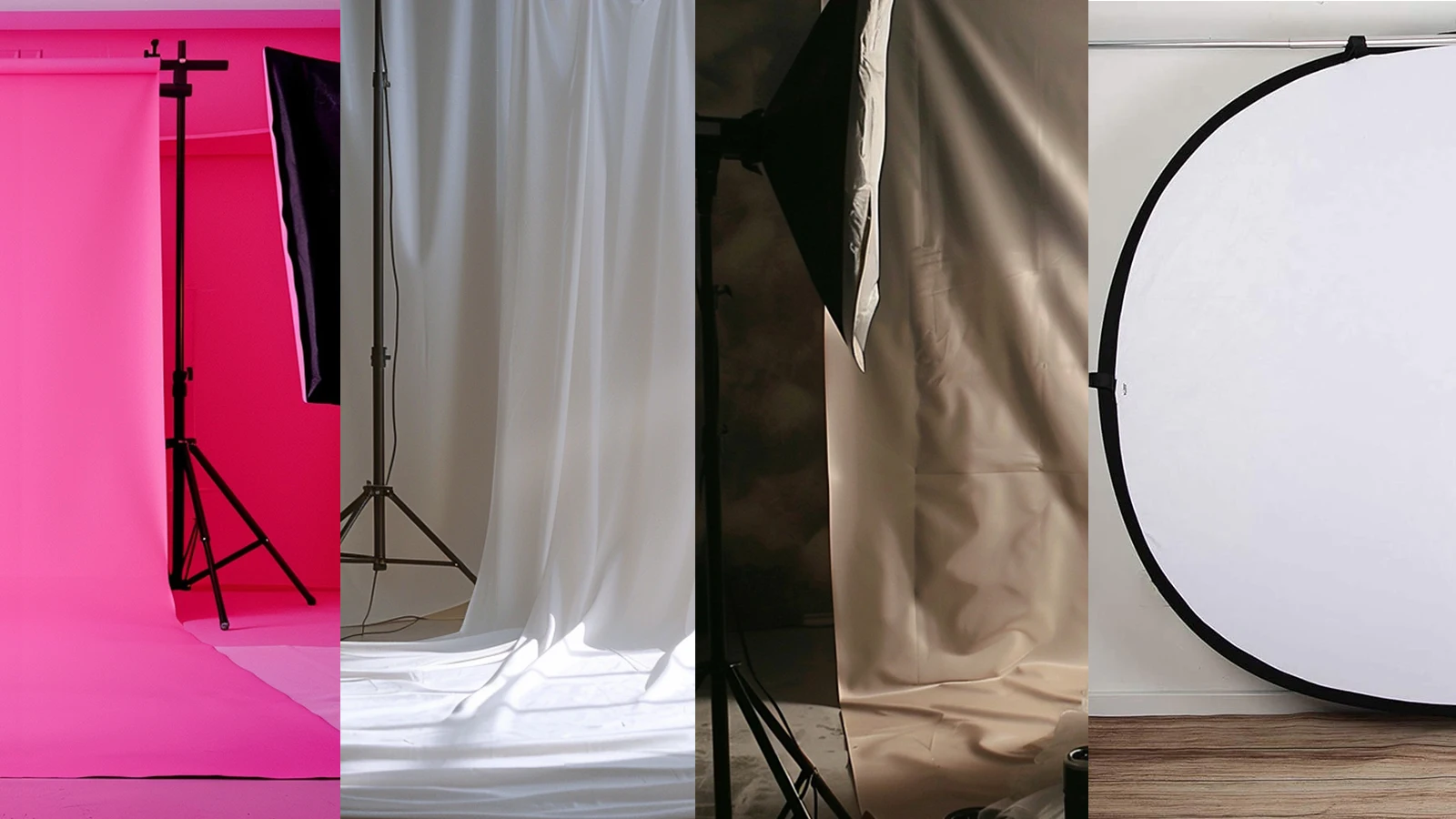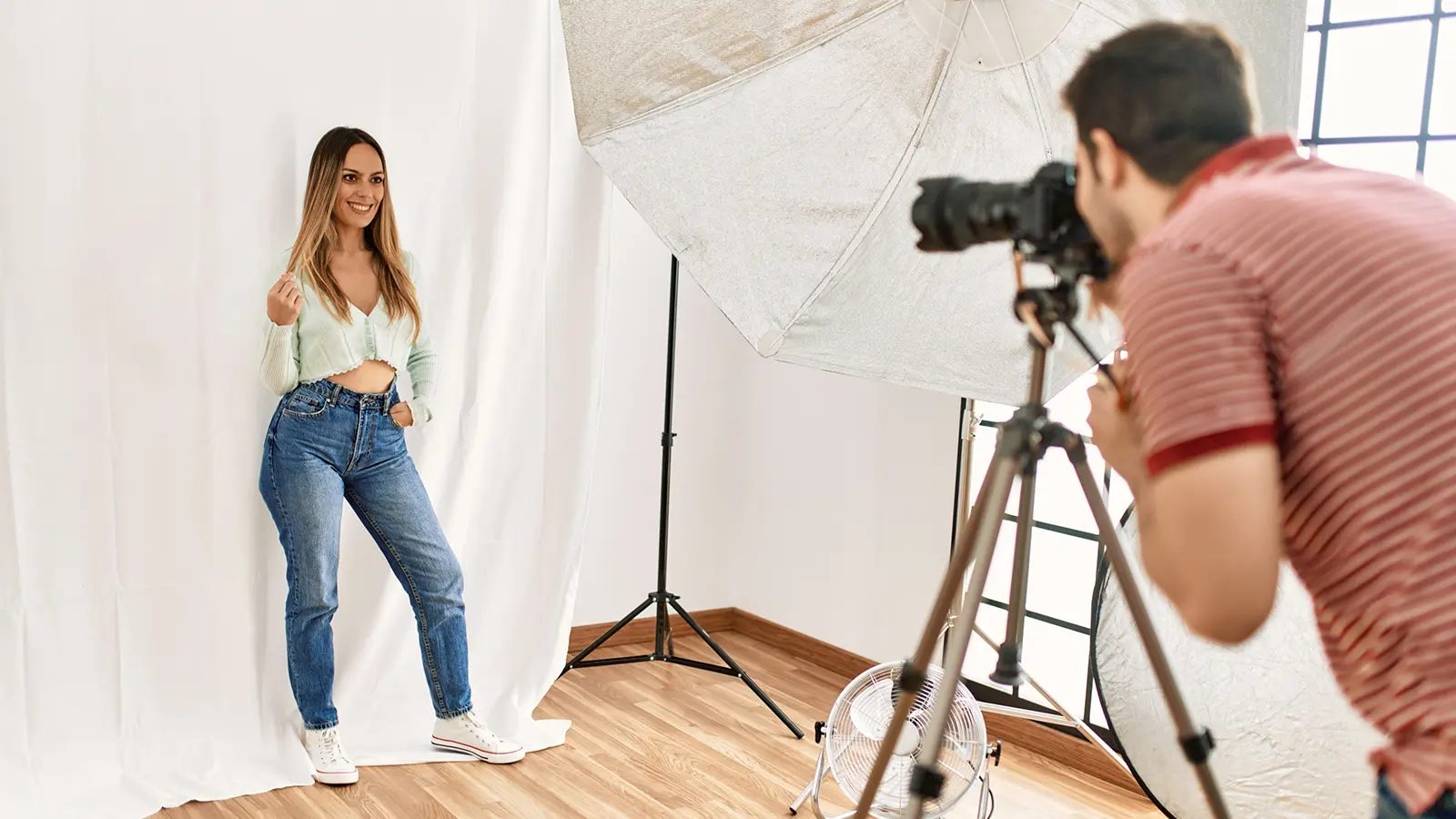
When you're preparing for a photography shoot, one crucial element to consider is the backdrop. It's not just about tossing up any old background - you need to choose one that complements your subject, theme, and mood. You'll want to harmonize colors, adjust the distance between your subject and the backdrop, and position lighting. Get it right, and your images will pop with professional flair. But how do you achieve this perfect balance, and what types of backdrops are best suited for your shot? Let's dive into the world of photography backdrops to find out.
Key Takeaways
- Choose a backdrop that complements the subject's clothing and theme to create a cohesive visual story.
- Experiment with different backdrop colors and textures to evoke emotions and add depth to the image.
- To create a blurred background effect and highlight the subject, keep the subject at least 6 feet away from the backdrop.
- Adjust lighting height and angle to blend the backdrop into the shot and minimize glare.
- Select a simple backdrop color that doesn't overpower the subject.
Types of Photography Backdrop

When selecting a backdrop for your photography shoot, you'll need to consider the type that best suits your needs. There are different types of backdrops to choose for your studio.
Paper Backdrop
Among the various types of photography backdrops, paper backdrops offer a cost-effective and convenient solution for creating a solid-colored background.
When using backdrops in your studio, seamless paper backdrops provide a smooth, non-reflective surface ideal for solid color backgrounds. As a photographer, you'll appreciate the ease of use and portability of paper backdrops. They are perfect for on-location shoots or in-studio photography.
Muslin Backdrop
Select muslin backdrops for their unparalleled portability, durability, and versatility in various photography settings. This choice allows you to achieve high-quality images with ease. As a photographer, you'll appreciate the convenience of these lightweight, wrinkle-free backdrops. They are easy to transport and set up in photography studios or on-location shoots.
The texture of muslin adds a soft, natural look to your background, enhancing the overall aesthetic of your image. You can easily customize muslin backdrops by dyeing them to match your desired color or pattern.
Canvas Backdrop
When considering different backdrop options, canvas backdrops stand out as a top-tier choice. They offer unparalleled customization possibilities and a unique aesthetic that elevates your photography setup.
With canvas backdrops, you can achieve a personalized touch through hand-painting. Moreover, these backdrops are waterproof, making them durable and easy to clean for long-term use.
Collapsible Backdrop
When you need a backdrop that's both portable and versatile, a collapsible backdrop is an ideal choice. It offers a convenient and practical solution for photographers who require a quick setup and easy storage.
As a portable and reversible design, it's perfect for on-location shooting and small studios. You'll appreciate the convenience of quick setup and easy storage, making it perfect for photographers on the go.
With various sizes and designs available, you can customize your collapsible backdrop to suit your photography needs. Plus, they're lightweight, making them easy to transport and set up, saving you time and effort during photo sessions.
Uses of Photography Backdrops
When you incorporate a photography backdrop into your shoot, you can make your subject stand out. By doing so, you'll create a captivating sense of depth and add a sense of narrative to your image.
Make the subject stand out.
Choose a simple backdrop to make your subject the main focus of the photo. A well-chosen photography backdrop can enhance your subject's features, making them more prominent in the frame.
Consider using a contrasting color to make your subject pop and draw attention to key elements in the image. This is especially effective when the backdrop color complements the subject's attire or skin tone. By doing so, you'll create a visually appealing composition that directs the viewer's gaze to the subject.
Influence the mood captured in the photograph.
With a carefully chosen photography backdrop, you can effectively establish the emotional tone and atmosphere of your image.
As a photographer, you understand the importance of backdrops in photography. The background color or pattern can significantly impact the quality of your image, conveying a specific mood or theme.
By selecting a backdrop that complements your subject, you can evoke a particular emotion or atmosphere. For example, a dark backdrop can create a reflective atmosphere, while a bright color can convey energy and playfulness.
Emphasize the theme.
Choose a backdrop that complements your subject and enhances the message and style of your photography.
For a portrait, choose backdrops for photography that complement the subject's attire, accessories, or surroundings. This harmonious blend will draw attention to the subject and create a cohesive visual story.
Incorporate backdrops with interesting textures or patterns that align with the theme, adding depth and visual interest to your image. By doing so, you'll create a cohesive look that reinforces the theme, making your photography more engaging and effective.
Create a captivating sense of depth.
To enhance your photography, use backdrops that change how the viewer perceives space to create an interesting sense of depth. Choose backdrops with varying textures or patterns to add visual interest and create a sense of dimension.
Consider using backdrops with layers or overlapping elements to visually separate the subject from the background. By thoughtfully selecting and using your backdrop, you can create a captivating sense of depth that draws the viewer in.
Add a sense of narrative.
By selecting backdrops that tell a story, you can weave a narrative thread throughout your photography. To achieve this, incorporate themed backdrops that make your subject stand out. These backdrops help convey a specific message or theme in your images.
Experiment with different textures, patterns, and colors to evoke certain emotions or moods. Consider using backdrops with props or accessories to enhance the storytelling aspect of your photoshoots. This could include doors, windows, or landscapes that add depth and context to your images.
How to Use a Backdrop for Photography

Start by harmonizing the colors in the background with those in the foreground. Adjust the distance between your subject and the backdrop to create a cohesive atmosphere.
Improve your setup by choosing a simple background, fixing the lighting, and positioning your subject for the best result.
Harmonize the colors in the background with colors in the foreground.
Pick a backdrop color that matches the main colors in your subject's clothes or features to make the image look good. By doing so, you'll create a visually appealing image that draws the viewer's attention to your subject.
Consider the mood or theme of your shoot and choose a backdrop color that enhances it. Applying color theory principles will help you create a harmonious palette. Avoid color clashes between the background and the subject to maintain visual harmony.
Experiment with different backdrop colors to find the one that works best for your style. By harmonizing the colors in the background with those in the foreground, you'll produce professional-looking photographs that engage your audience.
Adjust the distance between your subject and the backdrop.
Now position your subject at an optimal distance to create a visually appealing separation between the two. Aim to place your subject at least 6 feet in front of the backdrop to prevent shadows and distractions in the backdrop.
This subject distance allows for a better focus on the subject and creates a more blurred background effect. Ensure the backdrop detail is diffused or softened to avoid drawing attention away from the subject.
Experiment with different distances to find the best setup for your subject and backdrop. This will help you create a striking image with a blurred background.
Choose a simple backdrop that won't distract from the subject.
Select a backdrop that complements your subject by opting for a solid color. It helps maintain focus on the subject without distractions. A simple backdrop is key to a successful photoshoot. Neutral colors like white, gray, or black are great options as they provide a versatile and professional look.
Avoid busy patterns or bright colors that may overwhelm the composition and take attention away from your subject. By choosing a solid color, you'll ensure that the focus remains on your subject. Experiment with different backdrop colors to find what works best for your photography style and subjects.
Adjust the height of the lighting to blend the backdrop into the shot.
Position your lights at the right height to blend the backdrop into the shot. This will remove harsh shadows and create a smooth background that matches your subject.
Experiment with different lighting heights to find the optimal position for a smooth and professional backdrop effect. When you position the lighting at an angle, you'll minimize glare and ensure even illumination across the backdrop. This prevents shadows from forming on the backdrop, allowing for a seamless blend into the shot.
Make sure to position your subject appropriately against the backdrop.
Positioning your subject at an optimal distance from the backdrop is crucial to creating a visually appealing and professional-looking image. To avoid distractions and make the subject stand out from the backdrop, keep them away from it. Instead, position them at a distance that allows for a blurred background effect, emphasizing the subject.
Create a scene with the backdrops and props.
Once your backdrop is set, you can concentrate on adding props and styling elements to create a complete scene. Select props that harmonize with the backdrop's color, texture, and style to create a visually appealing composition. Try different lighting to highlight your prop's textures and details, creating depth and dimension in your scene.
Conclusion
Now that you've mastered the art of using a backdrop for photography, you're ready to elevate your visual storytelling.
Choose a suitable backdrop, adjust distance and lighting, and keep the focus on your subject to create captivating images.
Use these expert tips to make your photography stand out with powerful backdrops, creating impressive, professional results.
